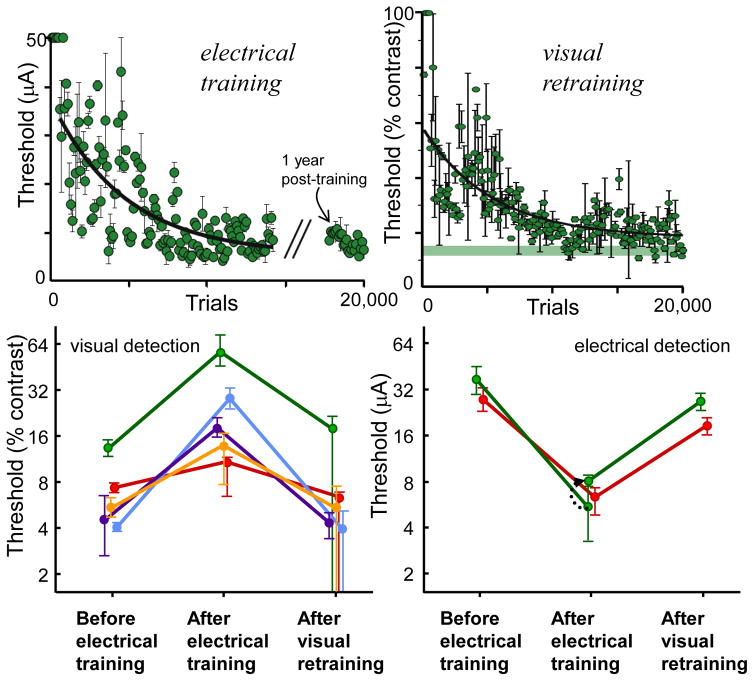Figure 4.
Macaque monkeys learn to better detect microstimulation in V1. Top left. Threshold currents for detection of an electrical stimulus during a two-interval forced-choice task. The monkey’s performance improved exponentially with a τ of 4700 trials and an asymptote of 5.4 μA. Even after one year of not performing the task, the monkey’s current detection thresholds remained low. Error bars indicate 67% confidence intervals. Top right. After electrical training, visual thresholds at the same V1 site were dramatically increased, but returned to normal after visual retraining (τ of 5300 trials and an asymptote of 18% contrast). Each point is the threshold determined from 100 trials. Bottom. Reciprocal nature of changes in detection thresholds for visual (left) and electrical (right) stimuli at different V1 sites (colors). Error bars indicate 95% confidence intervals.
Used with permission from Ni & Maunsell 2010

